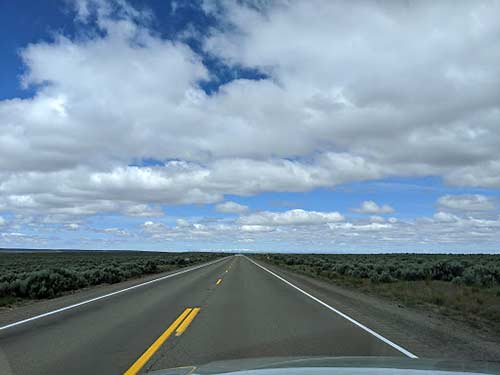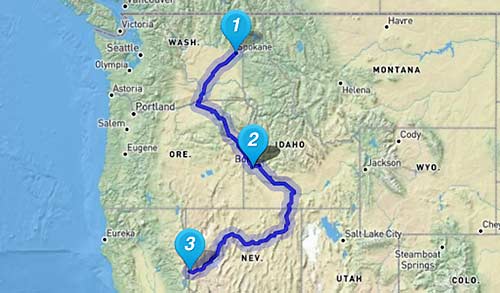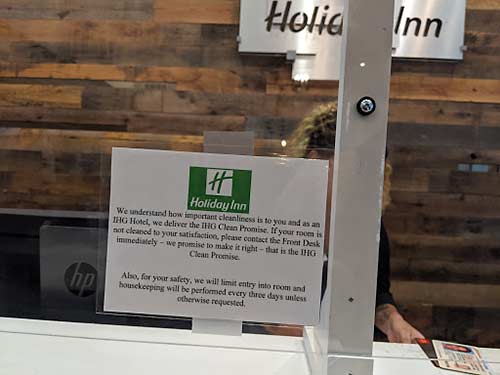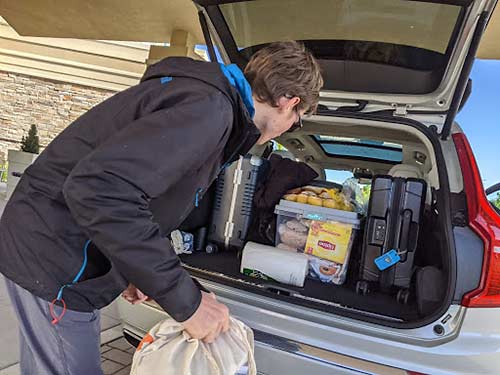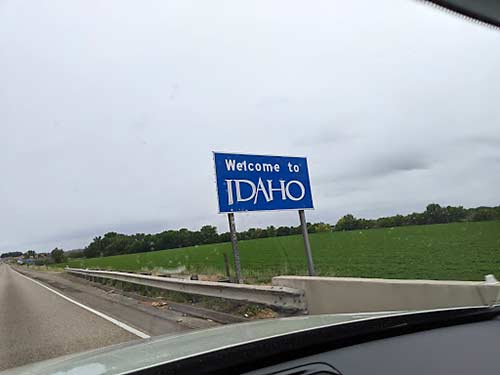SMART CONSUMER
|
You probably won't find the 788-mile drive from Spokane, Wash., to Reno, Nev., on any top 10 lists. It's a two-day journey through the farmland and mountains of Oregon and Idaho. But if you're looking for an idea of what it's like to take a road trip now, there may be no better gauge. For example, how are other travelers treating the risk of a coronavirus infection? A drive through the American West will answer that question. What about hotels? Travel down to Reno to find out. Same thing for restaurants. And, of course, the million-dollar question: Is it safe to take a road trip? Road trips are big this summer. One-third of the respondents to a new survey by auto insurance company Clearcover say they'll drive more in the second half of 2020 than they did for the same period a year before. "The old-fashioned road trip is back," declared Ariana Gibson, Clearcover's head of driver insights.
Why I drove across the West I shouldn't have been here. My three kids and I were supposed to be in Europe this year, but after two months in lockdown in Nice, France, we evacuated to Washington State. After two weeks of quarantining in Uncle Pete's basement, it was time to hit the road again. I had an assignment to write about the tourism recovery in Reno, and I needed to go. The first leg of our journey from Spokane to our overnight in Nampa, Idaho, took us through the plains of eastern Washington, into Oregon and Idaho. We'd made part of this trip in reverse about two years ago when we drove from Sun Valley, Idaho, up to Spokane to visit my uncle. This time, it seemed no different. Or was it? As I pulled my Volvo XC90 hybrid into the service station off Interstate 84, I noticed a few oddities. The station had temporarily shuttered its bathrooms and a nearby café had large signs that read "RESTROOMS ARE FOR CUSTOMERS ONLY." Handling the gas pump with my bare hands meant that I was potentially coming into contact with COVID-19. I should have just charged the car, but this wasn't one of those EV-friendly service stations. Not a plug in sight. I filled up the Volvo and then talked my way into the customers-only restroom to wash my hands. Fortunately, the car has a semi-autonomous drive mode called Pilot Assist where you barely have to touch the steering wheel. I had begun getting paranoid about any high-touch surface. The café patrons, none of whom were wearing face masks, looked at me as if I was a high-strung germaphobe. Maybe they had a point, at least in Idaho. On Friday, health officials recorded just 42 new COVID-19 infections. Lesson learned? If you're going to take a road trip now, don't forget your gloves and hand sanitizer. I don't know what I was thinking.
Nampa, Idaho, is about halfway between Spokane and Reno, and it's also where the Holiday Inn Nampa is located. I've been curious to see what the new IHG Way Of Clean meant for guests. Like many hotels, InterContinental Hotels Group, which owns the Holiday Inn brand, wants to assure guests that its hotels are squeaky-clean and coronavirus-free. It already cleaned its hotels with hospital-grade disinfectants. But this spring it added more safeguards. The company reduced contact at check-in by adding touchless transactions and front-desk screens, for example. It even sanitizes your key card before handing it to you. IHG also added new cleaning protocols for high-touch areas like door handles and TV remote controls. It's all tracked meticulously on a "last cleaned" chart. Our rooms were immaculate. The bathtub appeared to be brand new. The TV remote looked like it had never been used. Maybe it hadn't. It was as clean as a military barracks that had just passed inspection. But how do you know it's clean? As I noted in a recent USA Today column, you really can't. But it's reassuring to know that IHG is trying. For guests at this Holiday Inn, the big takeaway was that housekeeping would only enter the room to clean every three days, unless you requested otherwise. "How's business?" I asked the woman at the front desk. She hesitated and then replied, "Slow." If you're going to take a road trip now, you might be able to get into a Holiday Inn for just 10,000 IHG points a night, as we did. Or it could be running at capacity, as some hotels reportedly are this summer.
Are restaurants open? Since my kids are 13, 15 and 18, my biggest concern -- besides safety -- was feeding them. Although we packed plenty of groceries, when we arrived in Nampa, we needed dinner. Luckily, the Blaze Pizza across the street was open for business. It was our first restaurant meal since February. Again, not what I expected. A new plexiglass partition greeted me at the register. There were hand sanitizer stations throughout the restaurant and social distancing markers on the floor ordering guests to give each other space. A sign also apologized for the lack of staffing. But that, too, was meant to increase safety, according to the company. It's all part of an initiative with the creative name Blazin' it Safe. It's not the only thing Blaze removed, unfortunately. When I tried to redeem a coupon (I mean, never order pizza without a coupon, right?) an employee told me it was invalid. Oh, well. Consumers are looking for consistency this summer. Experts say they may not find it. Angela Durko, who teaches at Texas A&M University, took a recent field trip to test the enforcement of COVID-19 prevention efforts. "I noted that each area, down to neighboring towns, is operating differently and communities are responding differently," she told me. "Coffee shops within 15 minutes of each other may be operating differently, rest areas on state lines may have different rules and hours, restaurants in neighboring counties may be accepting varying numbers of patrons, or none at all, inside their setting." In other words, the next Blaze Pizza might have been fully staffed -- and might have even accepted my coupon.
If you take a road trip now, is it safe? Even though the drive from Spokane to Reno isn't on any lists, I think it should be. While you won't find any famous landmarks or mountain ranges along the way, your reward is the vastness of the American West, which unfolds with each turn in the road. Sure, you don't hit the Sawtooth Mountains or Sun Valley, and you just drive across the Snake River instead of experiencing its rapids. But there are other things that make the drive worthwhile. The series of switchbacks on I-84 that take you 3,000 feet to Emigrant Hill feels like you're driving into another country. That first look of the snowcapped Steens Range in Oregon is breathtaking. Finally, the almost empty high desert of northern Nevada with the Sierras looming just ahead. It may be the perfect summer road trip. But is it safe? For my family, it was. As far as COVID-19 goes, relentless hand-washing, combined with sanitized hotels and restaurants, kept us healthy. Driving the Volvo, which has a well-earned reputation for safety, gave me some peace of mind, too. But Professor Durko's advice still echoes in my head. It's not the same everywhere. And the thought of that rest stop café where neither the patrons nor the servers were wearing masks comes to mind. Not the ideal dinner stop, even in a state with relatively few coronavirus cases. What is it like to take a road trip now? It's a risk. You can drive the safest car, stay at the safest hotels, eat in the safest restaurants -- and there are still no safety guarantees. But then again, are there ever? Christopher Elliott's latest book is “How To Be The World’s Smartest Traveler” (National Geographic). This column originally appeared in Forbes. |
